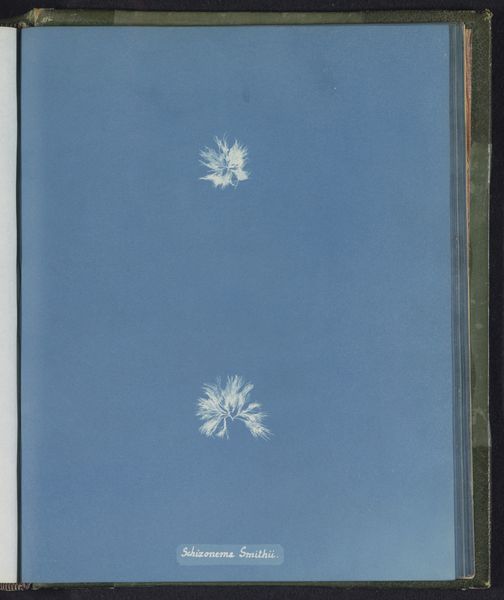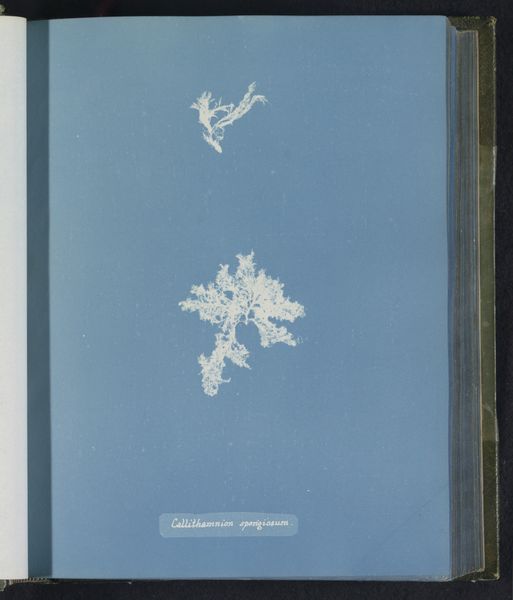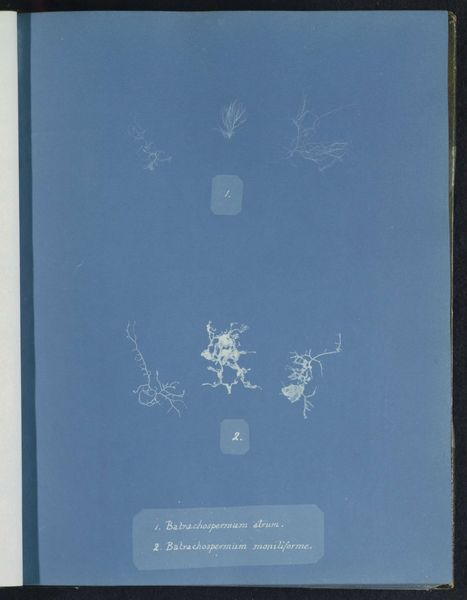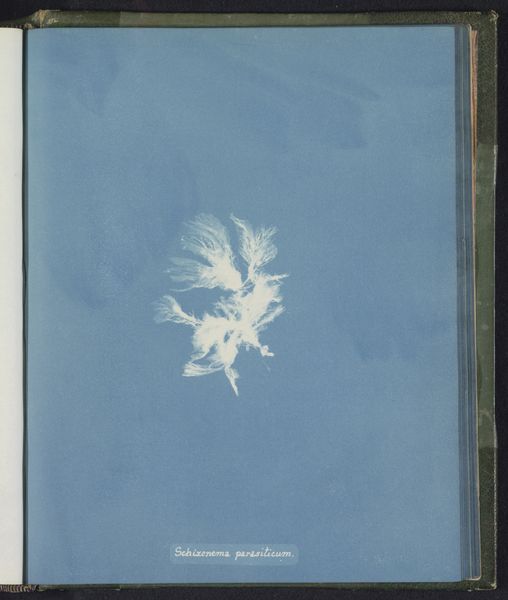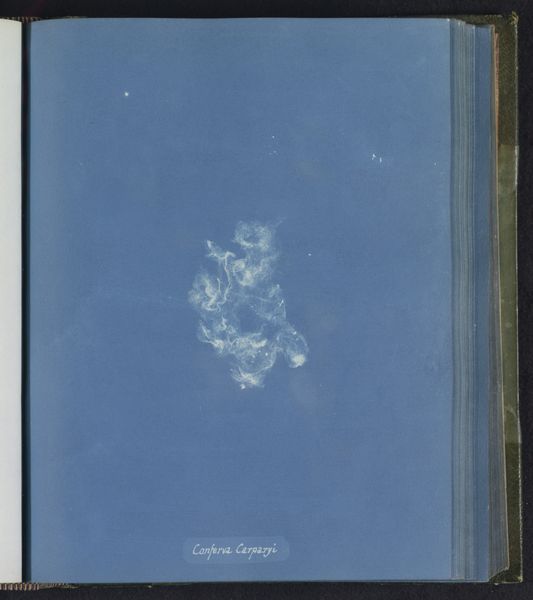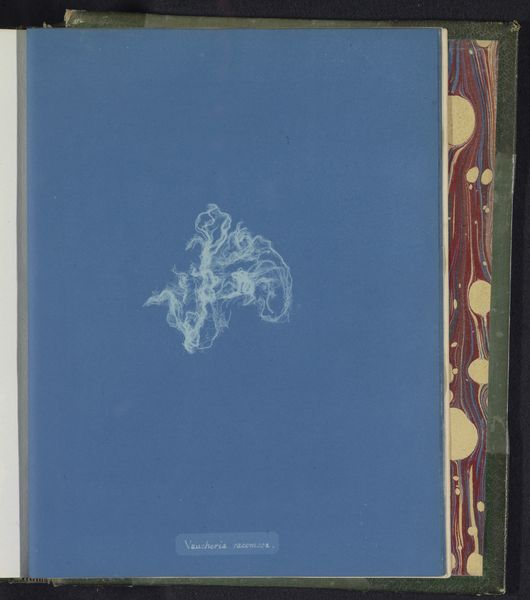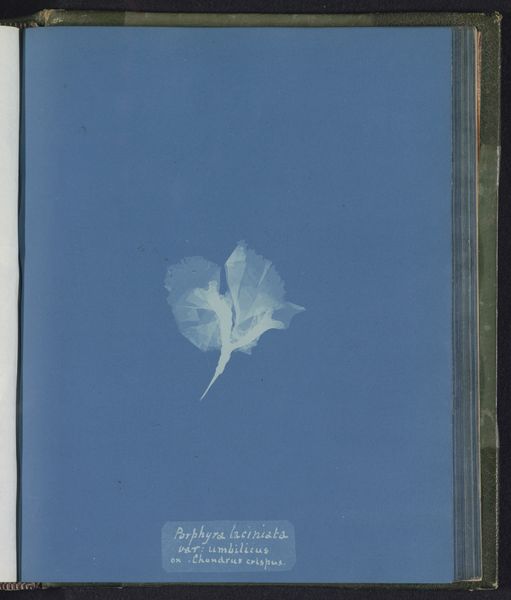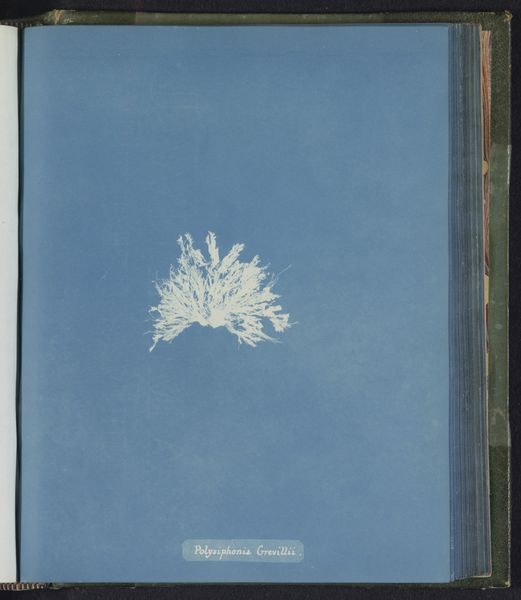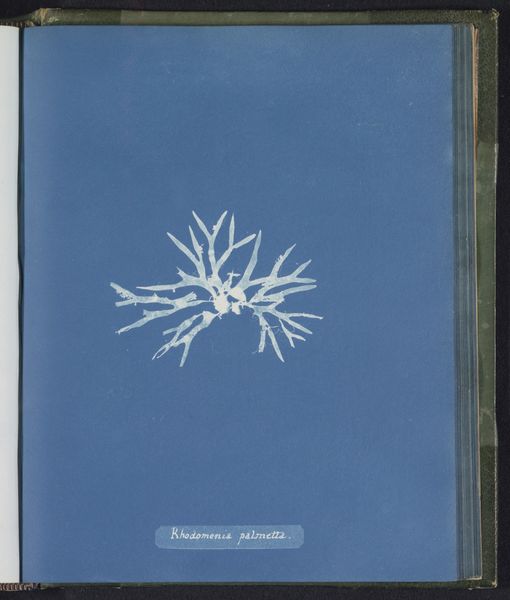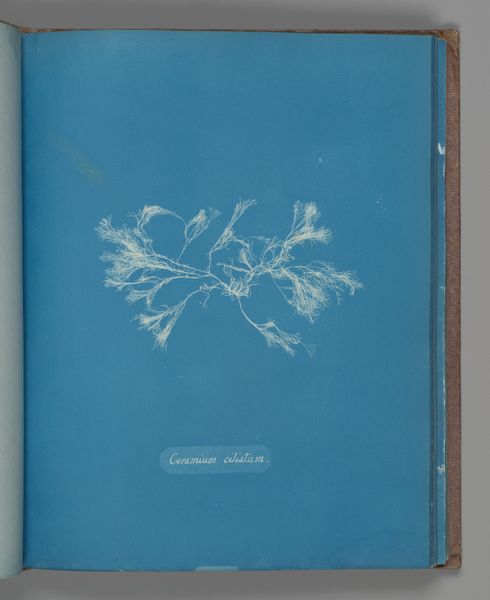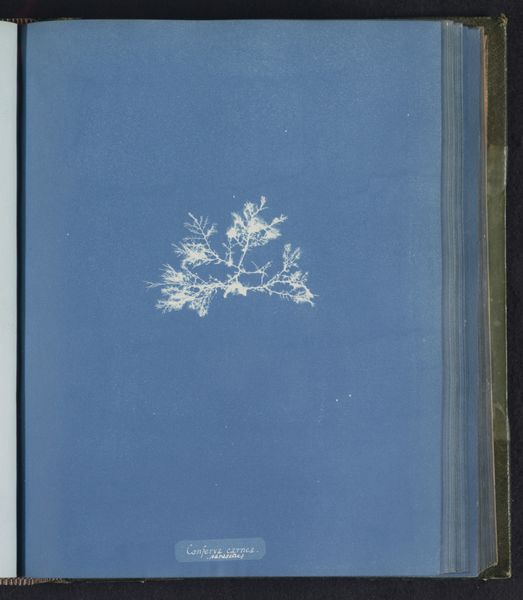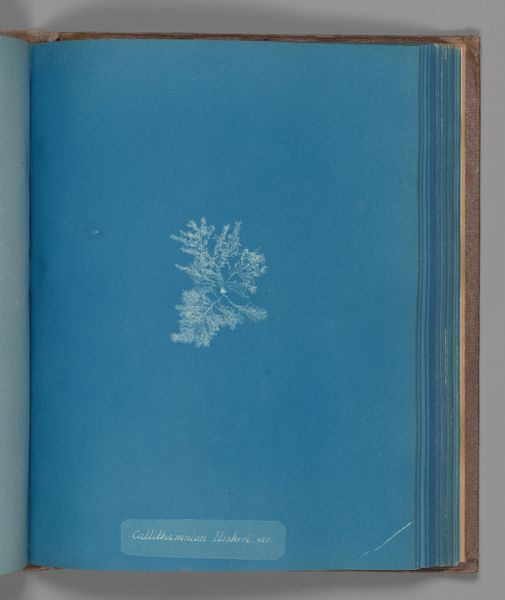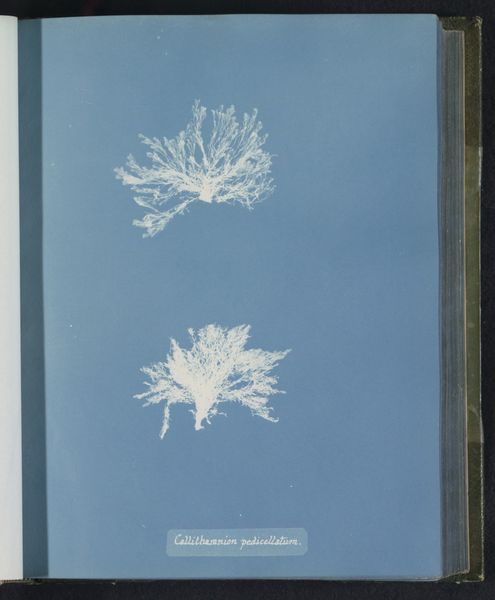![Callithamnion Borreri [= Callithamnion borreri] by Anna Atkins](/_next/image?url=https%3A%2F%2Fd2w8kbdekdi1gv.cloudfront.net%2FeyJidWNrZXQiOiAiYXJ0ZXJhLWltYWdlcy1idWNrZXQiLCAia2V5IjogImFydHdvcmtzLzQwZWZiYTlhLTkxOTUtNDI3MC05Zjc3LWVhNThlNDhkYzkyNC80MGVmYmE5YS05MTk1LTQyNzAtOWY3Ny1lYTU4ZTQ4ZGM5MjRfZnVsbC5qcGciLCAiZWRpdHMiOiB7InJlc2l6ZSI6IHsid2lkdGgiOiAxOTIwLCAiaGVpZ2h0IjogMTkyMCwgImZpdCI6ICJpbnNpZGUifX19&w=3840&q=75)
print, cyanotype, photography
#
still-life-photography
# print
#
cyanotype
#
photography
#
realism
Dimensions: height 250 mm, width 200 mm
Copyright: Rijks Museum: Open Domain
Curator: Oh, this has a real haunting, ethereal feel to it, doesn't it? So simple, so striking. Editor: It’s almost like a ghost of seaweed. What we're looking at is a cyanotype by Anna Atkins, dating from about 1843 to 1853. It's from her work "Photographs of British Algae: Cyanotype Impressions." An apt description! Curator: Cyanotype...so that accounts for the stunning blue, like looking into the deepest part of the ocean. I just love how the stark whiteness of the algae pops against it. It's like a forgotten treasure from the deep. Do you know the story behind these? I mean beyond its sheer beauty, of course. Editor: Well, Atkins wasn't just making art; she was documenting. Photography was very new at the time, and cyanotypes provided a relatively simple and inexpensive way to reproduce images. So, she basically created what’s considered to be the first book of photographically illustrated scientific documentation. She harnessed a groundbreaking method of printmaking to produce these illustrations of algae, carefully collected, laid on treated paper, and exposed to sunlight. Curator: Amazing. So, she was really a pioneer in both art *and* science! It’s hard to imagine, really. The precision… I just get lost thinking of the delicate process, and how she merged observation with feeling. Editor: Exactly. What’s truly compelling here is how utilitarian process and high-minded art coalesce, isn't it? She took the most recent tech to do this. This method allowed for endless reproductions and a systematic taxonomy of plants and organisms that had previously been unavailable to the scientific establishment. Curator: There’s something melancholic about the image as well, despite the science. Is it just me? A single sample suspended in an ocean of blue, as though everything beyond is already lost or faded. It feels...transient. Editor: Perhaps it’s our own perspective looking back on it, viewing this piece now as this tangible link to a long-gone time. A remarkable moment captured, demonstrating how necessity births invention, and how art stems naturally from our drive to order and comprehend. Curator: In the end, she did so much more than merely record information, and that’s really all there is to say. A unique way to see both the beauty of science and nature in tandem! Editor: Agreed! It underscores the notion that even within constraints – limited technology and the desire for classification – the artistic spirit finds its voice. A beautiful convergence of means and intention.
Comments
No comments
Be the first to comment and join the conversation on the ultimate creative platform.

